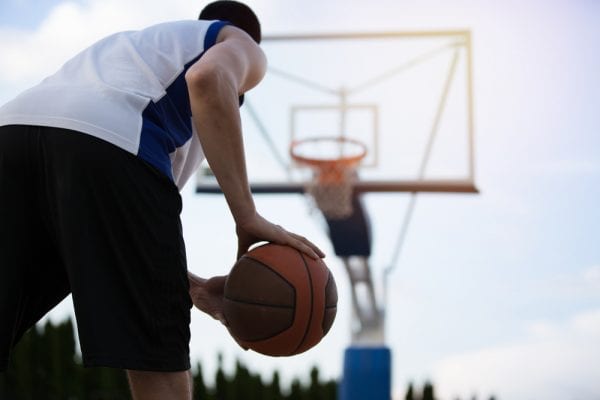
The medical name for jumper’s knee is patellar tendonitis, which is a condition involving overuse of the knee and localized pain.1,2 It is a tendon injury that occurs at the point where the tendon attaches to the bone and is commonly seen in athletes.
Many athletes find the pain to be nagging, but not unbearable, leading them to continue exercising and potentially cause long-term damage.
Jumper’s knee can be difficult to treat, and it requires periods of sustained rest for healing. Here is some information about the symptoms and causes of jumper’s knee, as well as which sports can lead to this condition and how to prevent its occurrence.
Understanding Knee Pain From Jumping
Jumper’s knee is typically caused by excessive jumping and running that causes the patella tendon to become inflamed and deteriorate.2 The motion of jumping can cause the quadriceps muscles to pull on the kneecap, which puts a lot of strain on the patella tendon. It is an injury of overuse that develops with repetitive motion and small tears over time. Basketball and track-and-field sports that involve jumping can lead to this condition.
Jumper’s Knee Symptoms
Athletes who experience jumper’s knee typically complain of pain at the bottom front portion of the kneecap and over the patella’s lower pole. This region will be tender to the touch and may be swollen compared to the other side of the kneecap. The pain is often mild, but most acute when doing exercises that contract the quadriceps muscles.
Jumper’s Knee Exercises
There are certain exercises that athletes can do to help alleviate the pain of jumper’s knee and prevent it from occurring in the first place.3,4,5 It is important for athletes to strengthen and stretch the quadriceps muscles on a regular basis so that the legs can withstand repetitive jumping without causing knee damage.
Athletes should keep the lower body muscles flexible by doing quadriceps stretches and hip flexor stretches, such as knee-hugs and lunges. Strengthening exercises that are beneficial for athletes who jump regularly as part of their training or performance should also be practiced. These include isometric quad contractions, simple leg extensions, squats, and step-back exercises. Plyometric exercises, like jumping rope, can also help build up athletes’ tolerance for jumping and build knee strength.
Jumper Knee Treatment
The first steps to relieving jumper’s knee pain are to rest the knee and use ice therapy as part of a rehabilitation program.2 To relieve jumper’s knee pain, athletes often use topical spot-treatments, like JointFlex, for fast relief. Athletes should apply a cold pack to the knee after exercise and during the first 24 hours of pain, for periods of 10 minutes per hour until the pain improves. It also helps to elevate the knee during painful periods.
Eccentric strengthening exercises, wearing a knee support, and anti-inflammatory medications may help as well.6 In severe cases of jumper’s knee, a doctor may recommend electrotherapy, cross friction massage, physical therapy, and even surgery. Surgery should only be pursued after more conservative methods have been tried and proven ineffective. The surgical process often involves cutting the tendon longitudinally and removing the abnormal tissue.
REFERENCES for JUMPER KNEE SYMPTOMS, CAUSES, AND TREATMENT
1. Tendinitis. MedlinePlus. Retrieved October 26, 2018 from https://medlineplus.gov/tendinitis.html.
2. Patellar tendonitis (jumper’s knee). Johns Hopkins Medicine. Retrieved October 26, 2018 from https://www.hopkinsmedicine.org/healthlibrary/conditions/mens_health/patellar_tendonitis_jumpers_knee_85,P00922.
3. Exercises for jumper’s knee. Summitt Medical Group Foundation. Retrieved October 26, 2018 from https://www.summitmedicalgroup.com/library/adult_health/sma_patellar_tendonitis_exercises/.
4. Rehabilitation for patellar tendinitis (jumpers knee) and patellofemoral syndrome (chondromalacia patella). Boston Sports Medicine and Research Institute. Retrieved October 26, 2018 from http://www.bostonsportsmedicine.com/pdf/protocols/patellar_tendinitis_and_chondromalacia.pdf.
5. Metzl, J. D. (2016 June 29). Treating and preventing patellar tendinitis (Or “jumper’s knee”). Triathlete. Retrieved October 26, 2018 from https://www.triathlete.com/2016/06/training/treating-preventing-patellar-tendinitis-jumpers-knee_133635.
6. Gemas, T. K. (2015 September 24). Treatment of jumper’s knee. Sports Health. Retrieved October 26, 2018 from https://www.sports-health.com/sports-injuries/knee-injuries/treatment-jumpers-knee.
